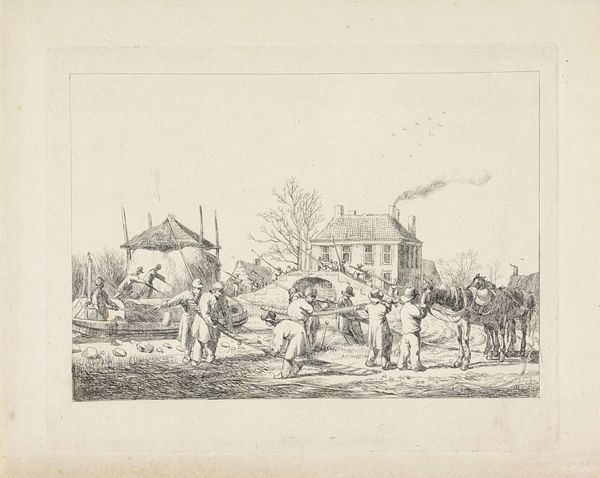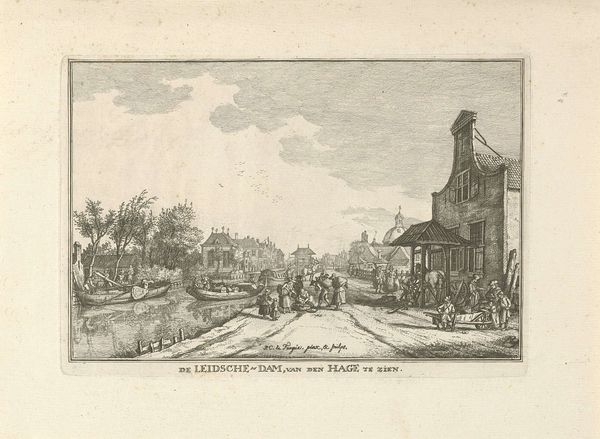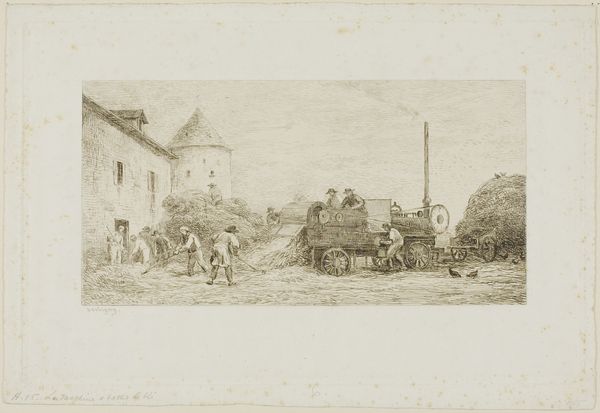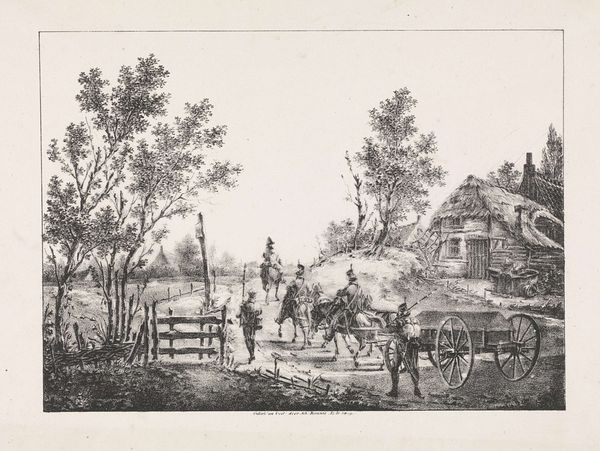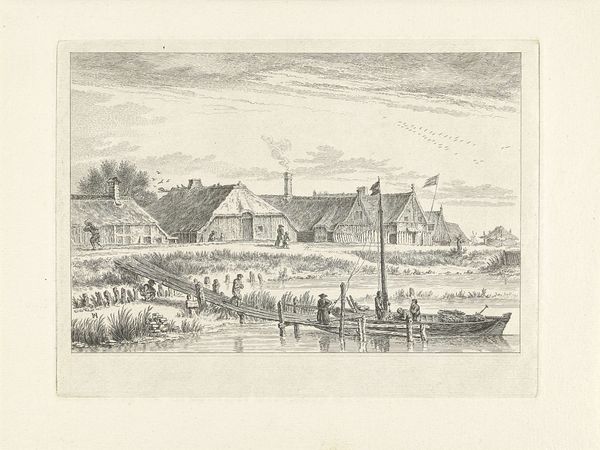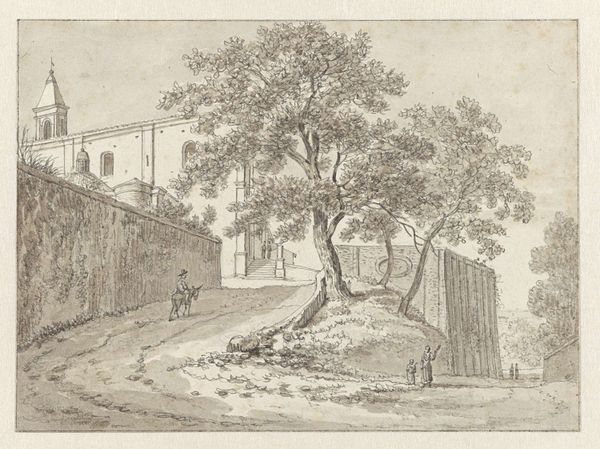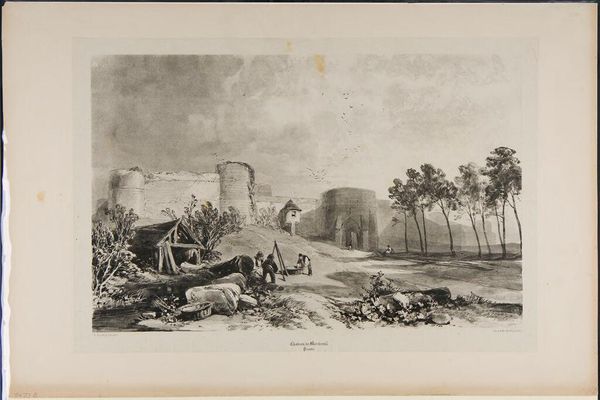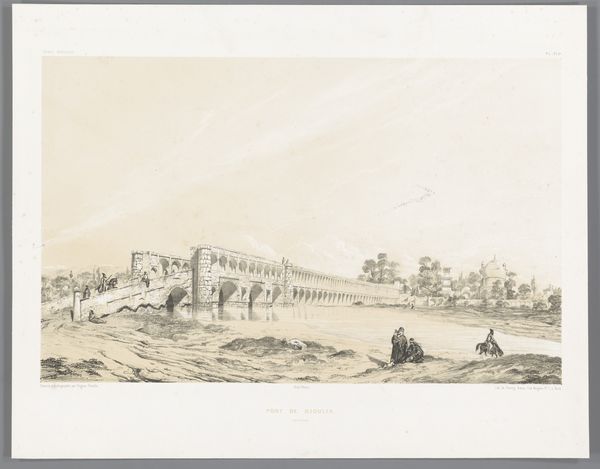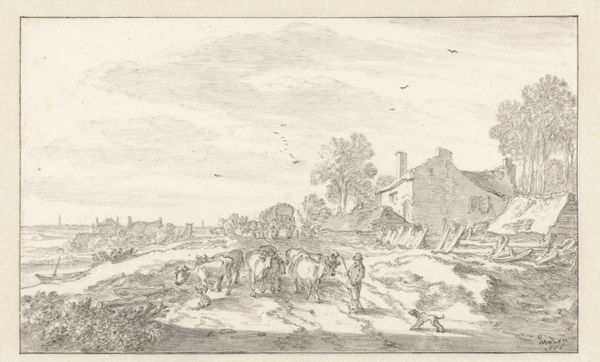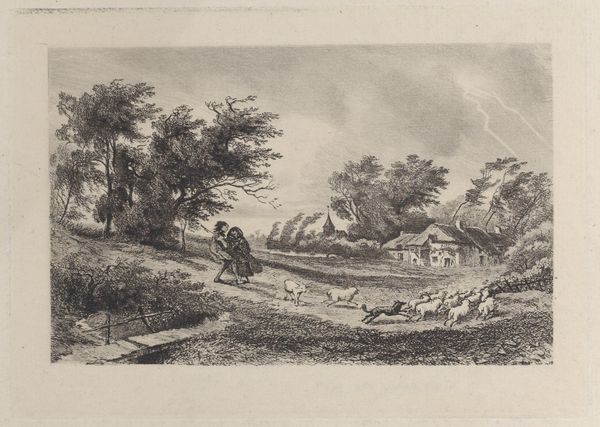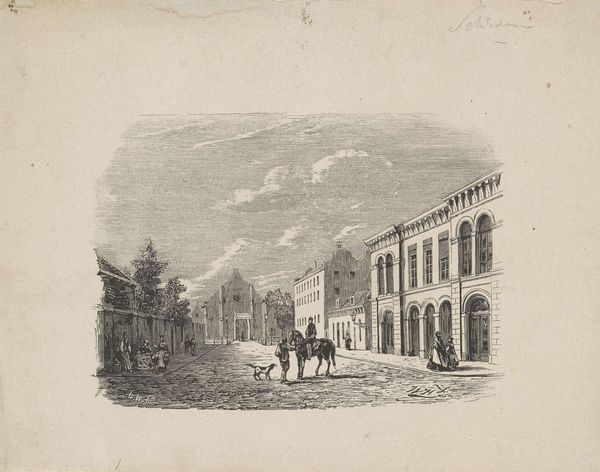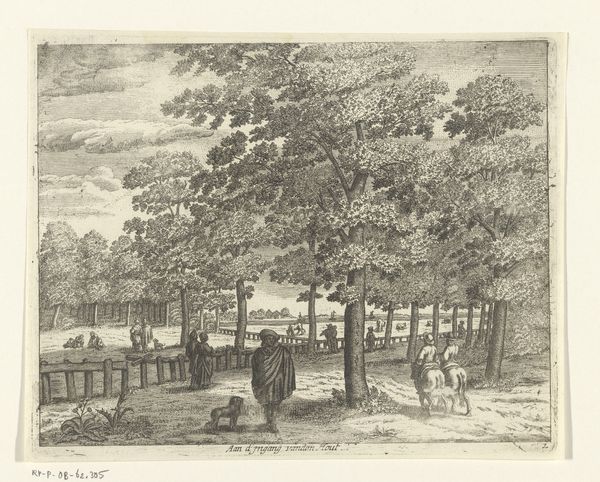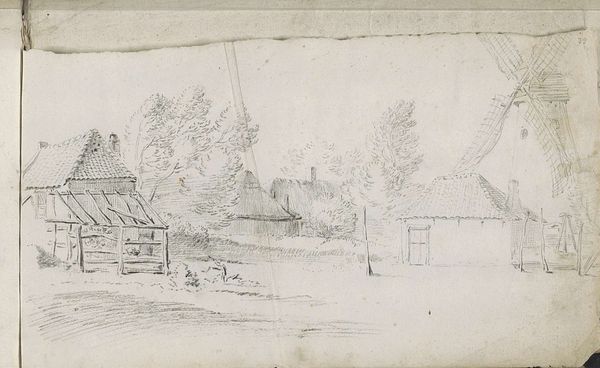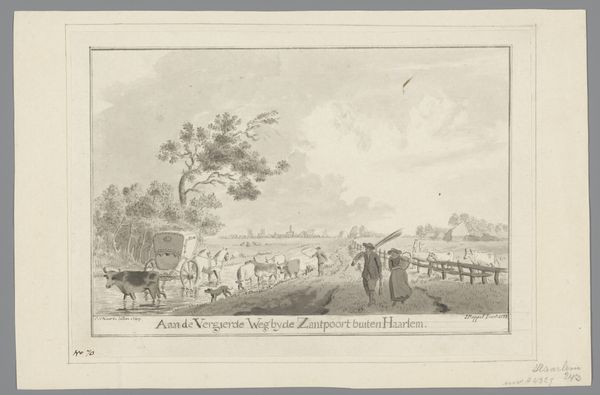
Dimensions: height 125 mm, width 174 mm
Copyright: Rijks Museum: Open Domain
Curator: This is Pieter van Loon’s “Gezicht in Spa,” created in 1862. It’s a drawing rendered in ink and pencil on paper, currently residing here at the Rijksmuseum. Editor: The scene has a strangely static quality. It’s a street view, presumably bustling, yet the soft, limited palette mutes the energy. The covered wagon seems like a hushed monument. Curator: Observe how van Loon utilizes the wagon cover. It is not merely a detail but a symbol of concealed potential or perhaps latent energy within the everyday. Its form evokes a sense of waiting or anticipation. Think of the cultural connotations of journeys and departures during that era. Editor: The material aspects are key. Ink and pencil allowed for portability, immediacy. A quick study, capturing a specific moment in time, rendered efficiently. What labor was required to maintain these horses? The cobblestones—where did they come from, who laid them? It makes me think about the infrastructure underlying even the simplest town view. Curator: Absolutely, and Spa itself held symbolic weight. As a known health resort, Spa represented escape and leisure for the bourgeoisie. Consider how that context influences the image of this almost still scene, and the man looking at us, outside the composition. He's a traveler of sorts. Editor: Did the artist engage with local materials in some ways we’re missing? Were these particular pencils or inks locally produced or widely available through colonial trade networks? Curator: It's a perspective we rarely ponder in relation to drawings like this. It opens questions about artistic dependence on a larger world, both materially and inspirationally. The houses, those heavy architectural forms behind everything—do they also echo a tradition, maybe of rural and urban design converging in Spa? Editor: Looking closely I think that Van Loon reminds us to contemplate about the hidden narratives and implications embedded in materials and place. Curator: Yes, it shows us how art reflects cultural values but it is built by raw matter too. Editor: The artwork certainly challenges our preconceptions. I will look into it more when I'm at the archives.
Comments
No comments
Be the first to comment and join the conversation on the ultimate creative platform.
